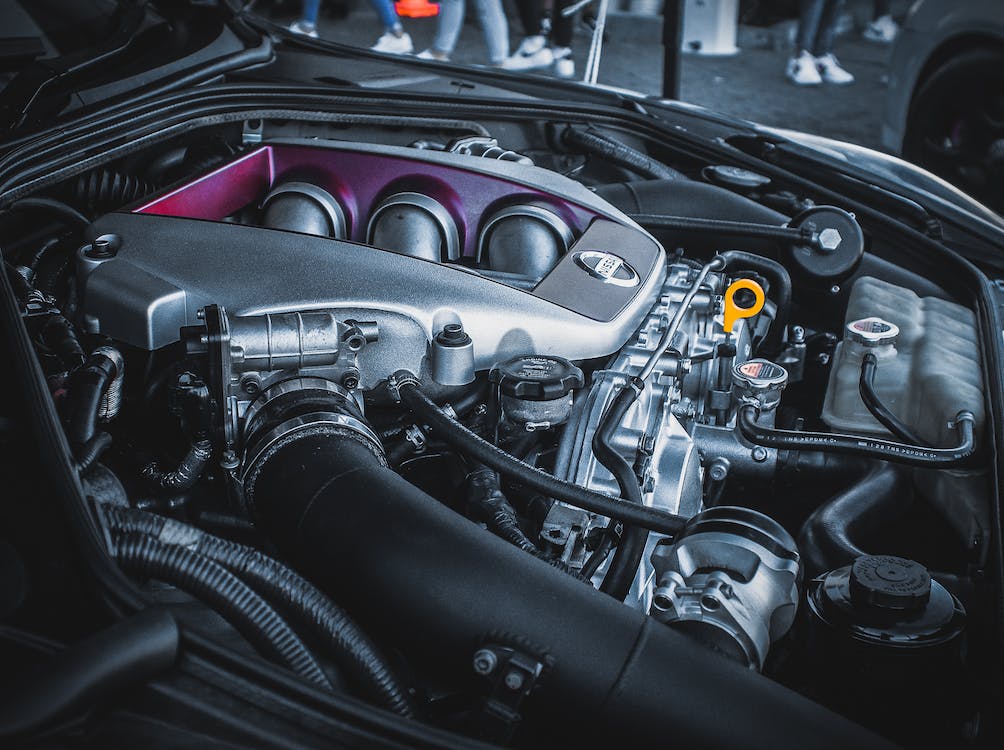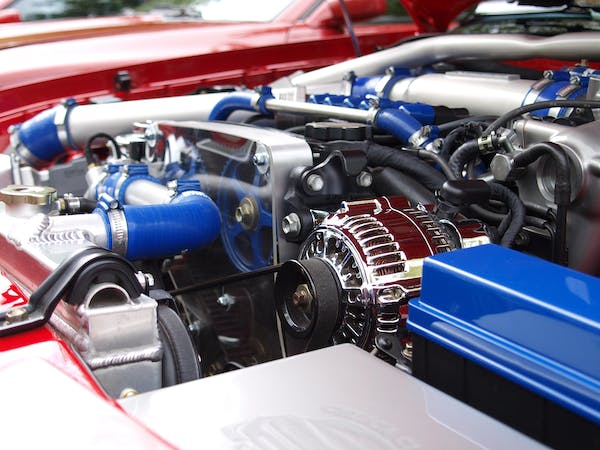Contents
– Role of the alternator belt
– How to recognize an accessory belt noise?
– Repairing an alternator belt
– Cost of replacing an alternator belt
It is also called the “accessory belt,” and its breakage can sometimes lead to serious consequences. The best way to prevent this damage is to listen to the sound of an alternator belt. Listen carefully and follow our advice!
Role of the alternator belt
The alternator belt, or accessory belt, transmits the engine’s rotational movement to the components it naturally drives: alternator, water pump, steering pump, air conditioning compressor, etc.
It is an asynchronous belt. This means that, unlike the timing belt, it does not drive synchronized movements: the relative angular position of the pulleys on board is not important to the crankshaft pulley.
Please note: its footprint is trapezoidal or grooved with 2 to 6 plies. This is the most common belt today.
How to recognize an accessory belt noise?

Does it run, squeal or rattle? A belt noise says a lot about its condition and the possible causes of the damage. You have to be careful to identify it accurately.
A slight metallic ringing sound
Causes: When cold, this noise often reveals a belt with worn grooves, a belt not properly engaged on the pulley impressions, or slightly misaligned pulleys. The dynamic belt tensioner or the declutching pulley of the alternator may also be at fault.
Consequences: The belt deteriorates; the alternator’s drive and other components may be affected.
Remedies: Replacing the belt will eliminate the problem in 90% of cases. In other cases, the tensioner or alternator pulley must be replaced.
A high-pitched squeal
This often occurs when the engine is cold and increases in intensity at the start of acceleration, then suddenly stops.
Causes: The belt is slack, the engine is idling, and the belt is twisting abnormally. The alternator light, no longer driven, lights up intermittently or continuously. The damper pulley, fixed to the crankshaft, may be damaged; the rubber shock absorber part between its hub and groove is destroyed, and the 2 parts “slip” on each other.
Consequences: For a slack belt, it deteriorates because it slips. In the case of the affected damper pulley, the rubbery debris can enter the timing system and shift the belt, causing severe damage, such as engine failure.
Remedies: After visualizing its appearance (no cracks or splits), simply re-tension it or replace the belt and pulley.
A whistling or a slight rolling noise
Causes: The belt is too tight, in the case of a dynamic (automatic) tensioner, and its size is smaller than recommended.
Consequences: Here again, the outcomes are sometimes significant, and the stresses generated can destroy the damper pulley and the bearings of the various driven components.
Remedies: Loosen the belt or replace it.
Repairing an alternator belt
The replacement of an alternator belt is not always easy due to its lack of accessibility. It is essential to take into account the following notions:
– Before dismantling, sketch the belt’s path through the various pulleys;
– Make sure that the belt is correctly positioned in the pulley grooves;
– Tension the belt according to the manufacturer’s recommendations (it is often necessary to be equipped with a specific tension controller called a tensiometer);
– for the replacement of a dynamic tensioner, the operation may require the removal of other components (air conditioning compressor, alternator…);
– Depending on the model, replacing a disengageable pulley can be a more complex operation, which should be left in the hands of a professional.
Cost of replacing an alternator belt
The price varies greatly depending on the vehicle model, the belt type, and the tensioner. Here are the most common prices:
|
Types of parts |
Prix ($) |
Labor rate ($) |
|---|---|---|
|
Belt |
10 à 80 |
30 à 50 |
|
Dynamic tensioner |
30 à 150 |
30 à 100 |
|
Disengageable alternator pulley |
50 à 100 |
50 à 80 |
|
Damper pulley |
30 à 200 |
40 à 70 |


3 comments
[…] alternator pulley is no longer turning, so the friction from the belt will cause it to heat up, make noises and eventually […]
[…] – How to Recognize an Alternator Belt Noise; […]
[…] How to Recognize an Alternator Belt Noise; […]